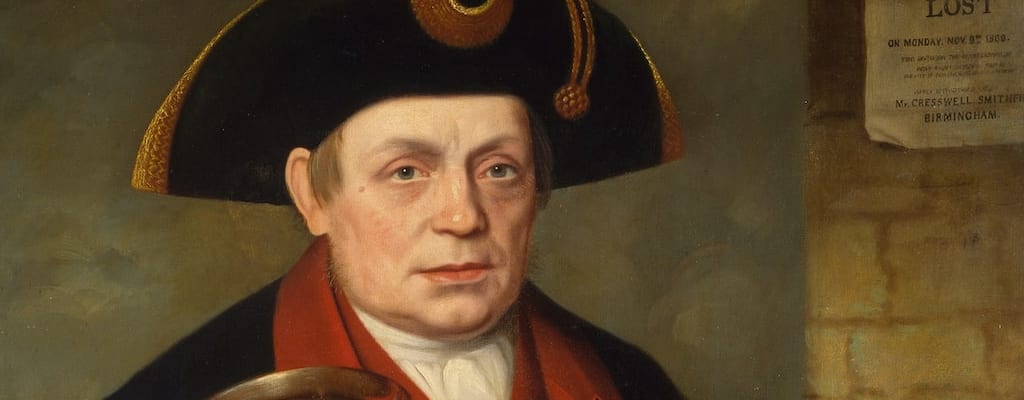tip one’s hat: Idiom Meaning and Origin
What does ‘tip one's hat’ mean?
The idiom "tip one's hat" means to show respect or admiration towards someone or something. It is a gesture that originated from men tipping their hats as a sign of courtesy or acknowledgement.

Idiom Explorer
The idiom "under one's hat" means to keep something a secret or to refrain from sharing information with others.
The idiom "turn on one's heel" means to abruptly and decisively change direction, often in a gesture of annoyance or indignation.
Tip the wink means to give a secret signal or hint to someone, usually in a sly or discreet manner.
The idiom "tip the scales" means to have a decisive or significant influence on a situation or outcome, often by providing an advantage or causing a change in balance.
The idiom "tip of the hat" is a gesture of recognition or acknowledgement usually used to show respect or appreciation towards someone or something.
The idiom "thumb one's nose" means to mock or show disrespect to someone or something in a defiant or insolent manner.
The idiom "take one's hat off to" means to show admiration or respect for someone's achievement or actions.
The idiom "take a bow" means to receive recognition or applause for one's achievements or performance. It is often used when someone has done something well and is being acknowledged by others.
The idiom "strike one's flag" means to surrender or admit defeat, often used in the context of a confrontation or competition.
Respectful Gesture
The idiom "tip of the hat" is a related expression to "tip one's hat." It is often used to convey a similar sentiment of respect or acknowledgement, but with a slightly different connotation. While "tip one's hat" typically implies a direct acknowledgment towards someone, "tip of the hat" can be used more broadly to acknowledge or recognize something noteworthy or impressive.
The phrase "take one's hat off to" is another idiom that is related to "tip one's hat." It is used to express a high level of admiration or respect towards someone for their achievements, qualities, or actions. Similar to "tip one's hat," this expression is a way of showing appreciation and acknowledging someone's accomplishments or qualities.
Another related idiom is "hats off." This expression is often used to convey a similar meaning as "tip one's hat" or "take one's hat off to." It is a way of metaphorically applauding or praising someone for their accomplishments or actions. Additionally, "hats off" can also be used to acknowledge or recognize a job well done or a particularly impressive feat.
The use of these idioms, including "tip one's hat," "tip of the hat," "take one's hat off to," and "hats off," adds depth and nuance to the English language. These expressions provide a colorful and expressive way to convey respect, admiration, and appreciation towards others.
Whether used in conversation, writing, or other forms of communication, these idioms serve as powerful tools for expressing positive sentiments and recognizing the achievements and qualities of others. They contribute to the richness and versatility of the English language and enhance our ability to convey emotions and sentiments in a concise and impactful manner.
As an experienced Editor for HubSpot, I recognize the importance of using idiomatic expressions effectively in written content. By incorporating these idioms into articles, we can enhance the clarity, coherence, and impact of our writing, making it more engaging and relatable to our audience.
When editing articles, I follow a set of guidelines to ensure that the content is well-structured, coherent, and effective. I pay close attention to clarity, structure, and style, always keeping our audience in mind. These guidelines help me improve the readability of articles and make them more engaging and appealing to our readers.
One of the key aspects of my editing process is adhering to AP style. This style guide provides a consistent set of rules for grammar and punctuation, ensuring that our articles are professional and accurate. Following AP style also helps us maintain a consistent and cohesive tone throughout our content, enhancing its overall readability and impact.
In addition to following AP style, I also focus on using simple words and phrasing. By using clear and straightforward language, we can ensure that our articles are accessible to a wide range of readers. This approach also helps us maintain a conversational style and a friendly, informal tone, making our content more relatable and engaging.
Paragraph structure is another important consideration in my editing process. I aim to keep paragraphs concise, typically consisting of 2-3 sentences. This approach helps improve the readability of our articles, making it easier for readers to follow and comprehend the information being presented.
Varying the language and avoiding repetition is another key aspect of my editing process. By using varied and expressive language, we can capture the attention and interest of our readers. I also ensure that phrases are not repeated excessively, as this can make the writing appear monotonous and less engaging.
Another important aspect of my editing process is fixing grammar, phrasing, and tonal mistakes. I carefully review each sentence to ensure that it is grammatically correct and properly conveys the intended meaning. I also pay attention to the overall tone of the article, making adjustments as needed to maintain a friendly and informal style.
Overall, my goal as an Editor for HubSpot is to improve the quality and effectiveness of articles by enhancing their clarity, structure, and style. By following AP style, using simple language, and employing a friendly and informal tone, I aim to create engaging and impactful content that resonates with our well-informed audience.
As I have demonstrated throughout this article, idiomatic expressions such as "tip one's hat," "tip of the hat," "take one's hat off to," and "hats off" add depth, nuance, and color to the English language. By incorporating these expressions into our writing, we can enhance its impact and engage our readers in a more meaningful way.
Example usage
Examples of how the idiom "tip one's hat" can be used in a sentence:
1. As the gentleman walked past, he tipped his hat to the ladies in a show of respect.
2. The boxer, after being defeated in a fair match, tipped his hat to his opponent as a gesture of sportsmanship.
3. The actor, upon receiving a standing ovation, stepped forward and tipped his hat to the audience in gratitude.
More "Gestures" idioms



